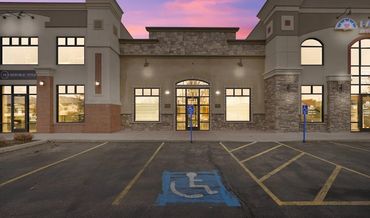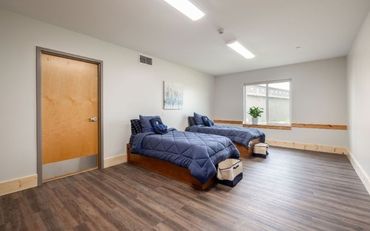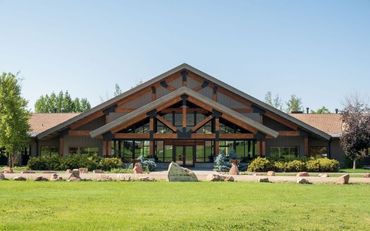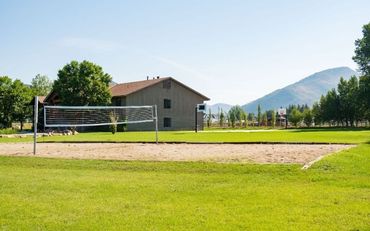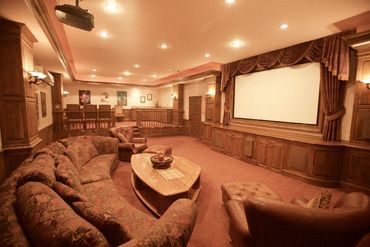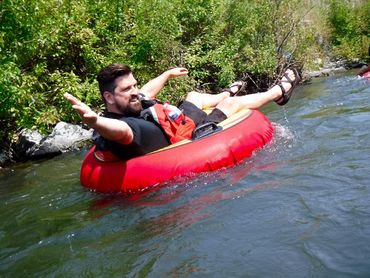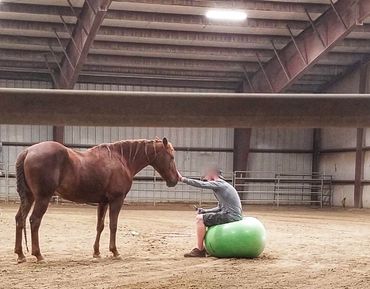
Drug & Alcohol Rehab Centers near Midway, UT
Finding treatment for substance use disorder in Midway, Utah, is a pivotal step towards recovery. Understanding the available treatment options and payment methods is crucial before embarking on this journey. It ensures a smoother transition into recovery and a more focused approach towards healing.
Treatment Centers near Midway, UT
All Treatment Centers near Midway, UT
Are You Covered For Treatment?
- Salt Lake City Rehabs
- Sandy Rehabs
- Ogden Rehabs
- Saint George Rehabs
- Orem Rehabs
- Provo Rehabs
- West Jordan Rehabs
- Draper Rehabs
- Clearfield Rehabs
- South Jordan Rehabs
Information About Rehab in Midway
Latest Reviews
Latest Reviews of Rehabs in Utah
Acqua Recovery
Strengths: Continuum of services Support for long term recovery-Life Planning Community outreach Diagnosis Personalized/Tailored treatment programs Faith based treatment options 12 Step treatment options Insurance based affordability Anonymity Confidentiality & HIPA N/A Acqua Recovery offers a continuum of services that includes Detoxification, Residential Treatment, Aftercare and Maintenance, and Intensive Outpatient services; all of which are high quality. The transition from one phase to the next was seamless and the effectiveness of the Recovery Management Model that is implemented has resulted in 20 months, to date, of recovery! The commitment to the integrated counseling and treatment for the entire family, which we all know that addiction has collateral damage, addresses the needs of everyone with one goal in mind...successful recovery and life long sober living! Acqua Recovery is truly a sanctuary of healing and hope.
Area Information
Midway, Utah, nestled in Wasatch County, embodies a serene, picturesque setting. Its tranquil ambiance, set against the stunning backdrop of the Wasatch Mountains, draws residents and visitors alike. With a modest population of about 6,000,1 Midway thrives on its outdoor recreational activities, charming local culture, and a close-knit community spirit.
Substance Misuse and Addiction in Midway, Utah
Drug addiction and its devastating effects are, unfortunately, present in Midway and also in Wasatch County, the county in which Midway is located. Data compiled by the Utah Department of Health and Human Services shows that, between 2017 and 2021, there were 12.7 drug overdose fatalities per every 100,000 residents in Wasatch County.2
Drug and Alcohol Rehab
Rehabilitation offers various tailored programs and interventions designed to address addiction and support individuals on their path to recovery. These programs encompass diverse treatment modalities and customizable plans to meet individual needs and circumstances.
What Happens in Drug and Alcohol Rehab?
Upon entering rehab, individuals encounter different stages of treatment tailored to their specific requirements. These stages, including detoxification, inpatient care, outpatient programs, and aftercare, are designed to accommodate various stages of addiction and recovery, ensuring a comprehensive approach to healing.
Detox Programs
Detox programs within rehabilitation facilities mark the crucial initial phase of a recovery journey. Medically monitored and supported by professionals, detox aims to rid the body of addictive substances while managing the discomfort of withdrawal symptoms. These programs are essential for creating a safe, controlled environment that facilitates the physical transition toward sobriety. By utilizing medications and closely monitoring an individual’s health, detox programs prioritize safety while providing a foundational step toward further treatment.
How Long Is Detox in Rehab?
The duration of detoxification can vary significantly, typically lasting between 3 to 7 days. However, this time frame is subject to numerous factors, including the substance of abuse, the individual’s physical health, the duration of addiction, and the severity of withdrawal symptoms. Some detox programs might extend beyond the usual time frame to ensure a more comfortable and safe withdrawal process, particularly for those dealing with long-term or severe addiction.
Inpatient Drug and Alcohol Rehab
Inpatient treatment programs within drug and alcohol rehab centers offer a structured and immersive approach to recovery. These programs encompass a range of therapeutic interventions, including individual counseling, group therapy sessions, educational workshops, and holistic treatments. Therapy, especially in group settings, plays a pivotal role in inpatient treatment.
Inpatient care provides a supportive environment where individuals receive round-the-clock care and supervision, enabling them to focus entirely on their recovery without external distractions. The typical duration of inpatient programs varies, commonly lasting for 30, 60, or 90 days, although some individuals might require longer stays based on their progress and treatment needs. Additionally, inpatient programs address underlying mental health issues or co-occurring disorders through specialized therapy, ensuring a comprehensive approach to healing.
Outpatient Drug and Alcohol Rehab
Outpatient treatment programs offer flexibility while providing tools for aftercare and relapse prevention. These programs focus on therapy sessions and skill-building exercises, allowing individuals to maintain their daily routines while undergoing treatment. Outpatient programs are tailored to accommodate various schedules and commitments, enabling participants to attend therapy sessions, counseling, and support groups while continuing with work, school, or family responsibilities. These programs offer a supportive network and access to professional guidance without the need for residential care, empowering individuals to apply learned skills in real-life situations and gradually reintegrate into their communities while sustaining recovery efforts.
How Much Does Rehab Cost?
Navigating the financial aspect of rehab can be daunting, but it should not prevent someone from seeking help. There are various assistance options and resources to cover treatment costs, ensuring individuals can access the help they need without undue financial stress. Some of these include:
- Payment Plans
- Government Grants and Scholarships
- Free Rehab
- State-Funded Rehab
Does Insurance Cover Drug and Alcohol Rehab?
Insurance often covers a portion of rehab costs, offering crucial financial support for those seeking treatment for substance use disorders. Widely accepted drug rehab insurances include, but are not limited to:
Finding The Best Rehab Center
Midway, Utah Drug and Alcohol Rehab Facilities
Our rehab locator tool empowers individuals seeking treatment to explore facilities by location. Individuals can also filter results by treatment type, therapies offered, and much more. Keep in mind that it is often recommended to consider treatment outside one’s immediate surroundings to minimize distractions and immerse fully in the healing process. Our locator tool assists in finding the most suitable treatment facility, whether in Utah or elsewhere, by providing comprehensive information about various options.
Sources
- United States Census Bureau. Midway, Utah. July 1, 2022.
- Utah Department of Health and Human Services. Health Indicator Report of Drug Overdose and Poisoning Incidents. March 27, 2023.











